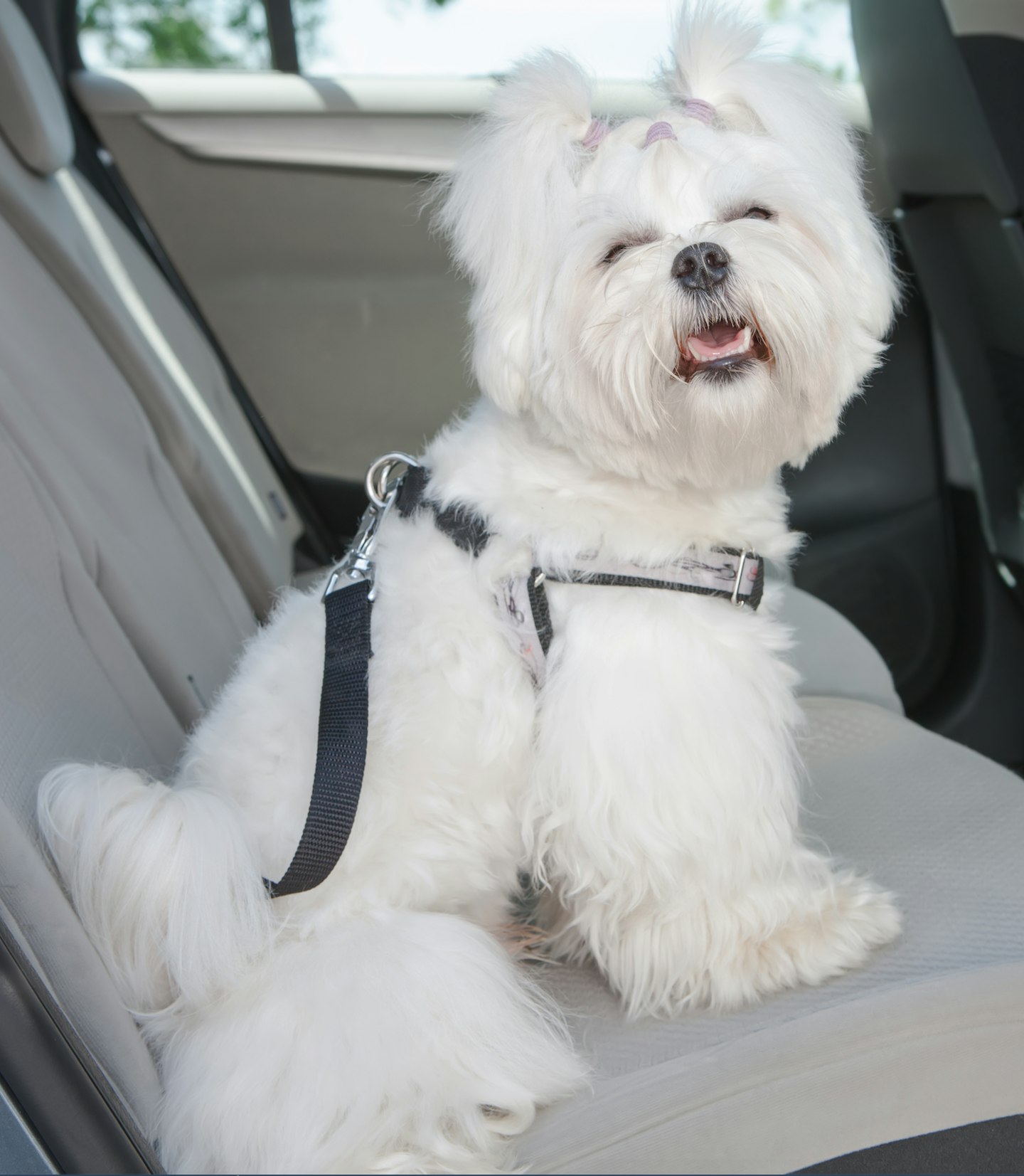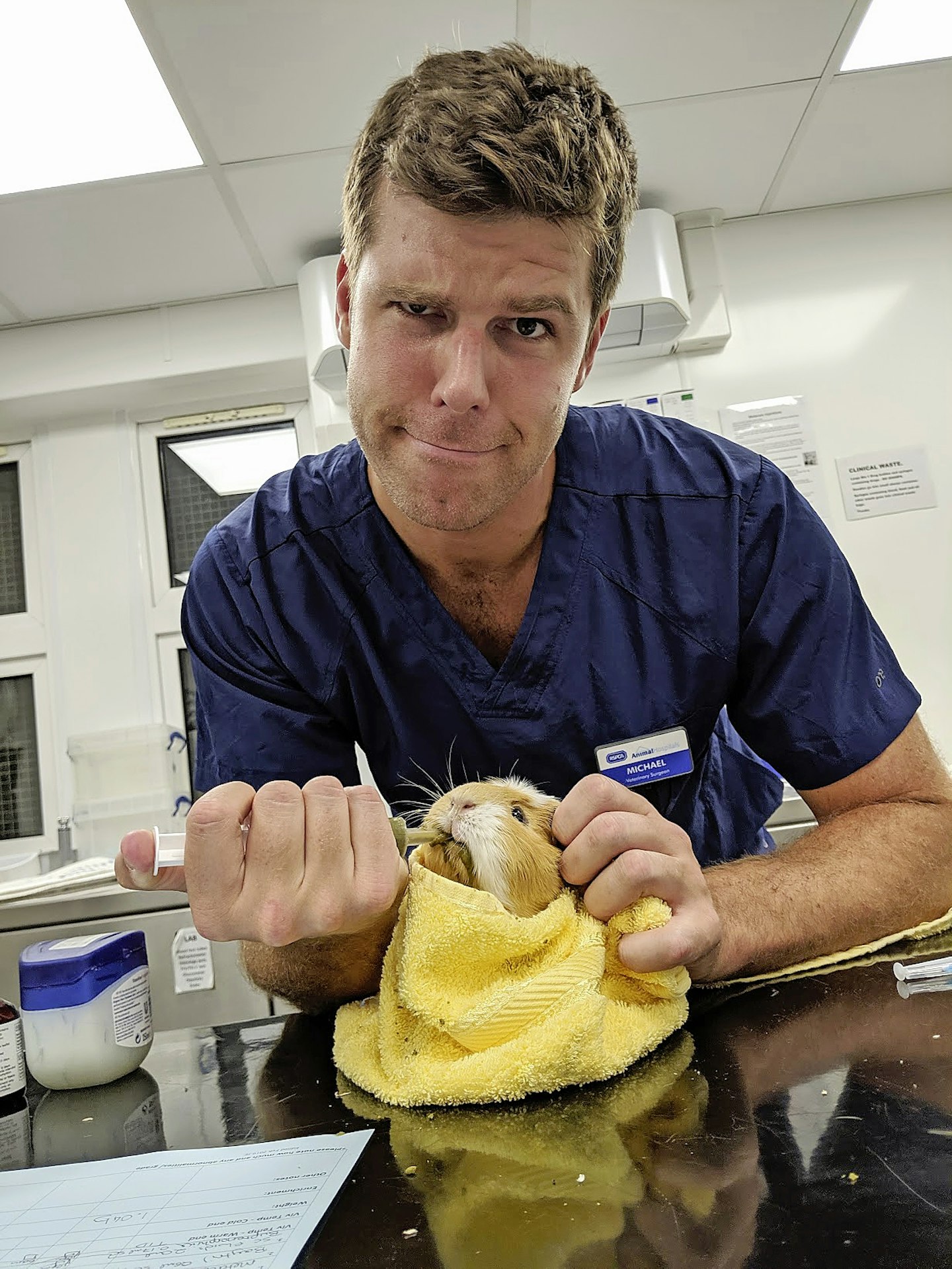Whether driving to the vet for a check-up or the park for walkies, most dog parents will have to transport their pup in a car at some point.
But what are the laws surrounding travelling with a dog in a car? And what is the safest way for them to get from A to B while in a vehicle?
Covering dog car safety and dog car laws – along with expert veterinary and behaviourist advice - below is the Take a Break Pets guide on how to travel with your dog in a car and the dog travel accessories you may need.
What is the UK law about travelling with your dog in a car?
While it is legal to take your dog with you in the car, The Highway Code states your pup should be ‘suitably restrained’ so they don’t distract you while you are behind the wheel and aren’t a danger to you, other passengers or themselves.
It is advised to use either a seat belt, car harness, pet carrier or dog car seat, dog cage, or dog guard as a way to keep your pooch safe and happy while you are driving.
And if you want to keep your car seats in tip-top condition, take a look at our pick of the best car seat protectors for dogs.
The right option depends on the size and type of your animal – and the size of your vehicle. If you’re unsure, speak to your vet for advice. If your dog is ‘suitably restrained’ then it is legal for them to sit in the passenger seat alongside you, in the backseat or in the boot.
However, it is not appropriate for a passenger to hold a dog while you drive, as they may break free, potentially distracting you and/or injuring you, themselves or anyone else in the vehicle.
If your dog isn’t ‘suitably restrained’ this can also lead to a fine up to £5,000 - and even an appearance in court.
Finally, remember that all dogs (from eight weeks old) must have a microchip and a collar with their owner’s details on if they go outside.

How can I keep my dog comfortable while I’m driving?
After ensuring they are content in their restraint, keep your dog happy by bringing along their favourite toy or blanket for comfort. They may also like the window to be slightly open for some fresh air – although make sure it isn’t low enough for them to stick their head out.
Have some snacks at hand to reward good behaviour. This will also encourage your dog to associate car trips with something positive.
Make sure to take regular stops if you’re going on a longer journey, so your dog can have a drink of water, a loo break and a leg stretch!

Can I leave my dog in the car?
While there’s no official law on leaving a dog unattended in a car, should your dog become ill or die from being left in the car, you risk being jailed for six months and fined.
It isn’t advised to leave your dog alone in a car – even for a short period. And never leave your dog unattended in a hot car. It can take as little as six minutes for them to suffer heatstroke – which can be fatal.
If you spot a dog in a hot car – even if they appear not to be in distress - do what you can to ensure their safety, ideally identifying their owner and making sure they quickly return to their car.
If you believe the dog is in danger, call the RSPCA’s 24/7 animal cruelty hotline on 0300 123 4999. Alternatively, you can dial 999 to report animal neglect.
Below, vet Dr Michael Lazaris and animal behaviourist Rosie Becoby, answer your frequently asked questions about travelling in a car with dogs…

FAQs
How can I stop my dog getting car sickness?
Dr Michael: "Car sickness in dogs can be due to a mix of motion sickness as well as fear/anxiety. Start by training your dog to get used to being in the car - PDSA has a great plan to follow online. Do this gradually over a few weeks with lots of positive reinforcement i.e. treats and praise.
"Anti-sickness medication from the vet can help during this training period, as well as calming supplements, pheromones and compression coats."
Can CBD help an anxious dog with travelling?
Dr Michael: "There is a lot of buzz around CBD (cannabidiol-rich hemp products) in both human and veterinary medicine.
"Studies have shown that CBD and CBDA products can have positive effects on dogs with mobility and pain issues, like arthritis, and scientists are looking at its effects on anxiety, epilepsy and skin disease.
"Before you grab the nearest bottle of CBD oil for your pooch, do some research and speak to your vet, as only a few companies have tested the safety and dosing of their products on dogs. If you don’t, it could be a waste of time, money and even be dangerous for your dog."
How can I stop my dog fearing the car?
Rosie: "In order to change your dog’s association with the car, you will need to put all journeys on hold until you have worked through a treatment plan.
"This is easiest with the help of a behaviourist, but to get you started I would spray Adaptil on some bedding in the car 15 minutes before starting a training session and provide your puppy with the choice to get into the car using a ramp or steps if necessary.
"Consider crate training at home so your pup has a strong positive association with the crate which can be transferred to a stationary car followed by the car engine running and eventually movement."
What is the best way to bring my puppy home?
Rosie: "I would recommend having at least two people travelling, so one person can have the puppy on a lap or next to them on the back seat – this is likely to be the pup’s first car journey alone and we definitely do not want to create a fear of car travel from the first journey, which is possible if we shut the puppy in a crate or restrain them with a harness before they are accustomed to either of those measures.
"It is important that the puppy is settled and not distracting the driver."

This article contains expert advice from Rosie Bescoby, who has a degree in psychology and zoology and a post-graduate diploma in companion animal behaviour counselling, and Dr Michael Lazaris, who studied veterinary medicine and zoology at the University of Edinburgh, then completed a small animal and exotics internship. He now works as a small animal vet in London.
Joe Brothwell is editor of Take a Break Pets and adores all creatures great and small. Despite being a doting cat dad to Winnie, she continues to be aloof!
